British Regiments in Western Australia
39th (Dorsetshire) Regiment of Foot
The regiment arrived in New South Wales late in 1825. In 1826 a detachment under Major Ralph Darling was sent from NSW with a party of convicts to establish a penal colony where Albany is now situated, before the French could claim the area.
They also served in Hobart and Swan River (Perth) and Bathurst before leaving for India in July 1832. The most famous member of this Regiment to serve in Australia was Captain Charles Sturt.
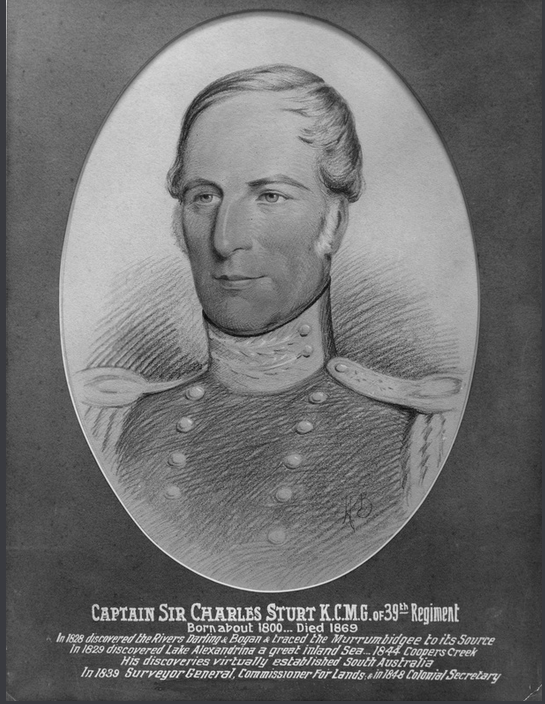
State Library SA image B6847. Capt. Sturt c.1850.

Image from Pintrest, no origin or date supplied.
63rd West Suffolks
Three years later Captain James Stirling and a party of English colonists settled in Swan River as the site of the new colony. A detachment of the 63rd West Suffolks was sent to guard the new capital. This regiment had arrived in Sydney from 1828 and also served in Hobart. It left for India in February-March 1833.
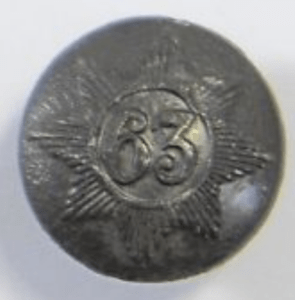
From Pinterest: Labelled as a pre-1855 example.
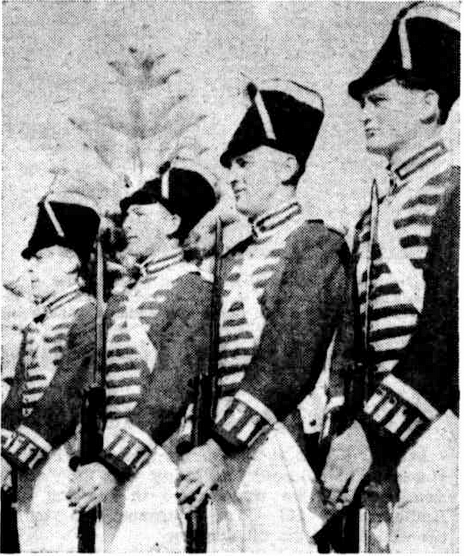
The West Australian (Perth), 5th June 1951 page 2. Soldiers wearing the uniform of the 63rd Regiment at the Foundation Day ceremony.
From 1829 detachments of many of the regiments serving in NSW would serve in Swan River, starting with the 2nd/40th Regiment.
West Australian Volunteers
See images of uniform buttons from page 27-29 of “Buttons of the Defence Forces in Australia” by J.K. Cossum.
Prior to Federation, the only army in West Australia was part-time volunteer forces. There were eight infantry companies and an artillery field battery. There were also volunteer Rifles, artillery, mounted troops and naval corps.
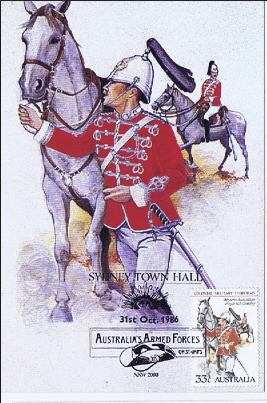
Stamped postcard from 200 showing the Western Australian Pinjarrah Cavalry. This unit was raised in 1862.
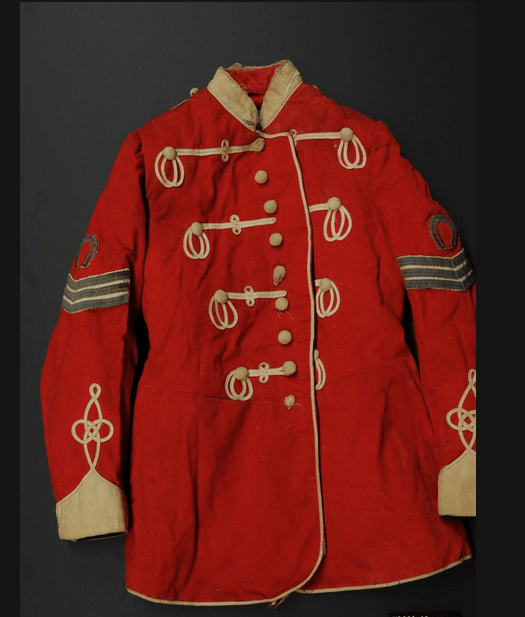
Museum of WA image H2004.49
Dress jacket of the Pinjarra Mounted Volunteers.The buttons are white and off white texile covered.
There had been a short lived Swan River Volunteers established in 1829. All able bodied men aged 15-50 years were obliged to serve, supplying their own weapons. It was not until 1861, upon the withdrawal of British troops, that that next volunteers group was formed in Fremantle and other places.
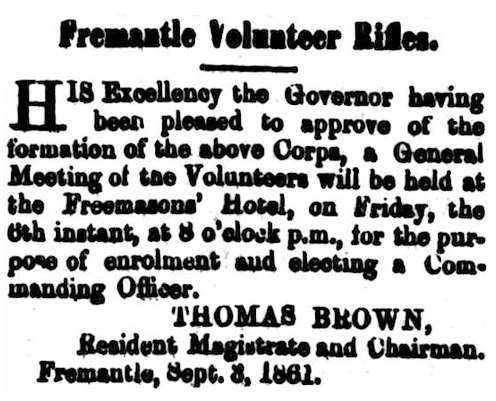
The Perth Gazette and Independent Journal of Politics and News, 6th September 1861 page 2.

Fremantle Library: Fremantle Volunteer Rifle Corps 1864.
The West Australian Volunteer Force consisted of such groups, mainly formed around Perth, Fremantle and Pinjarra. Numbers declined as it was hard to get training. Funding, introduced in 1869, was low. Re-oganisation in 1872 and then 1874 resulted in the merging the infantry into the 1st Battalion, Western Australian Volunteers, and training was improved. The size and effectiveness of the volunteer movement continued to be problematic until Federation, however troops from the colony fought in the Boer Wars. The colonial forces in West Australia just prior to Federation consisted of 135 officers and 2,561 other ranks.
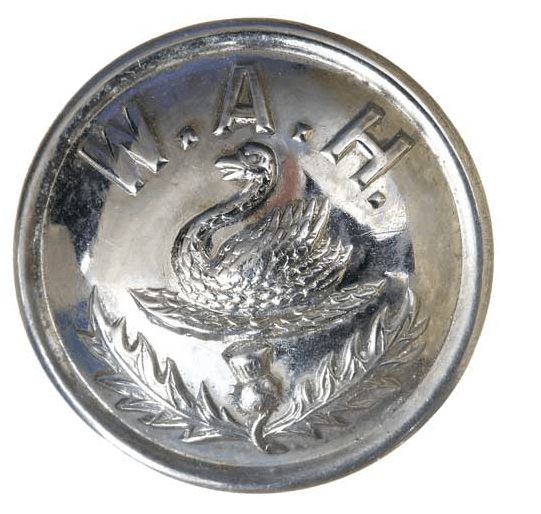
Thanks to Noble Numismatics: Western Australian Highlanders c.1903.
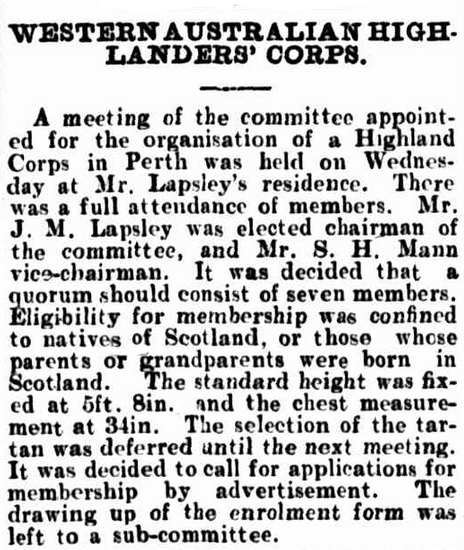
Western Mail (Perth), 21st February 1903 page 25.
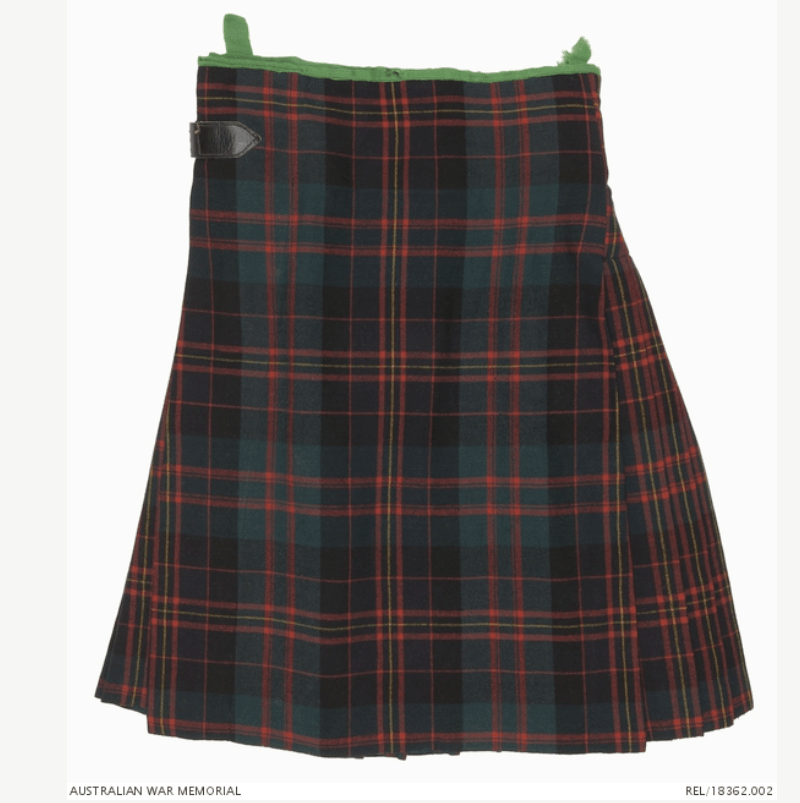
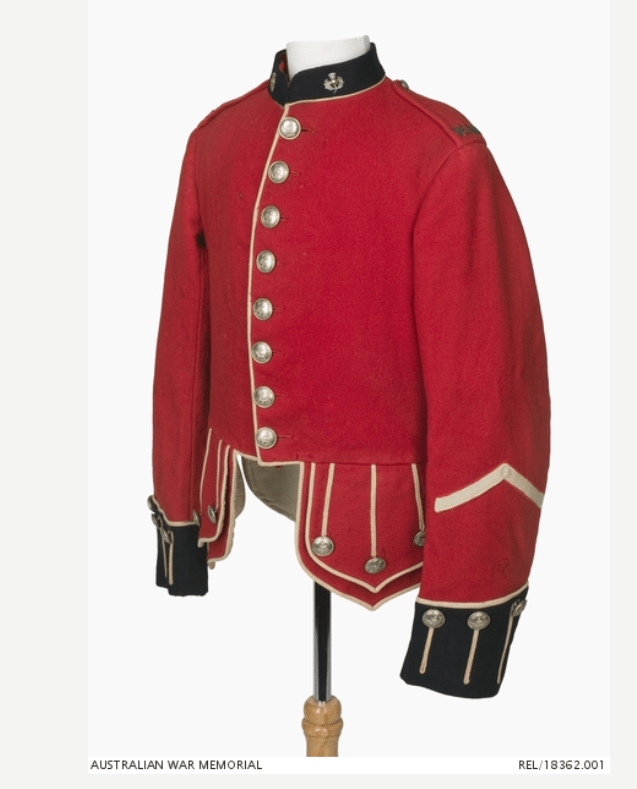
The images above are from from the Australian War Memorial. Kilt of the W.A.H. in Cameron of Erracht tartan, and doublet. The buttons on the doublet are backmarked Samuel Bros. Ltd. London. It is not clear when they were disbanded, but a new Cameron Highlanders of WA was raised in 1936.
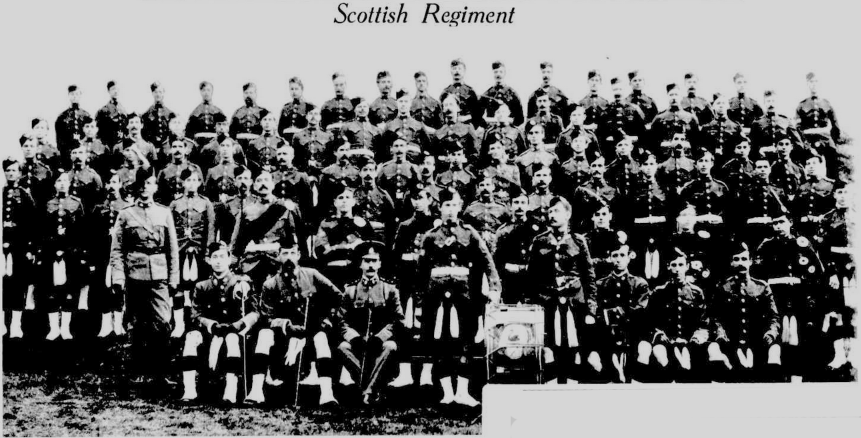
Western Mail (Perth), 30th Jul 1936 page 6. This was labelled as a photo from 1902, but presumably was 1903.
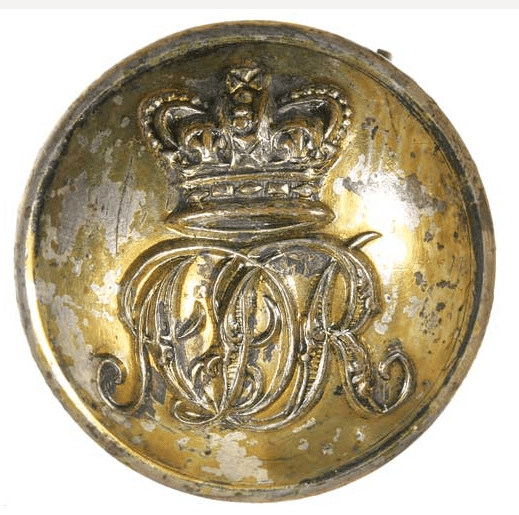
Thanks to Noble Numismatics: Albany Defence Rifles 1885-1888.
For badges of some of the volunteers, see http://www.diggerhistory.info/pages-badges/west_aust.htm
For all comments and questions, please use the Contact page.
